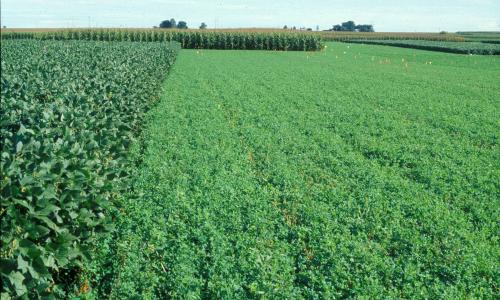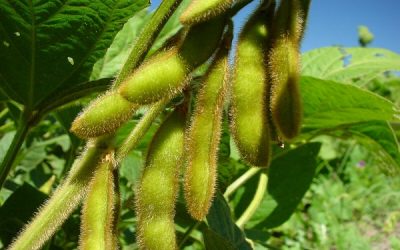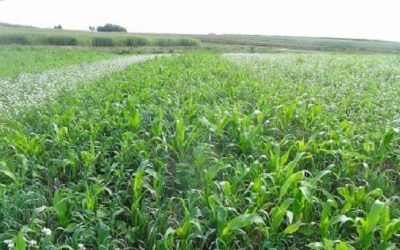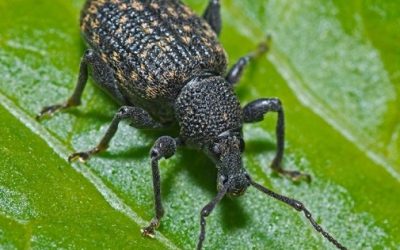Guide to Ley farming.

While crop rotation may not be a new practice, have you considered including seasonal pastures in your cash crop system?
Ley cropping system, in which a grass/legume mixture is grown in rotation with agricultural crops, starts with the planting of maize every second year, and annual ley crops in the alternate years.
In this system, perennial pastures can also be utilised in years two and four, between maize production years.
The important question every farmer should ask is this: which pasture species can be used for this system on my farm?
It’s important for the species and cultivars used as ley pasture crops to have specific characteristics.
Ley crops have two functions: to serve as good-quality animal feed, and to improve soil quality and fertility for the grain crops that will follow. Knowledge of the impact that a specific ley crop will have on soil and nutrition is therefore crucial to success.
Some ley pasture crops will aid soil carbon build-up and supply organic matter.
Initially, the grass will produce oxygen. Animals graze the grass, and this leads to the dung they produce, the plant roots and residues, and the micro-organisms in the soil creating organic material and carbon, which feed the soil. Some examples of ley crops that excel in these situations are:
Summer annuals: babala/pearl millet (Pennisetum glaucum) and forage sorghum;
Winter annuals: cereal rye (Secale cereale), stooling rye (S. cereale L.), annual ryegrass (Lolium multiflorum), triticale (×Triticosecale), oats (Avena sativa), wheat (Triticum aestivum), spelt (T. spelta), and barley (Hordeum vulgare); and
Perennials: tropical grasses, particularly Rhodes grass (Chloris gayana) for its ability to control nematodes.
Organic material is very important for improving soil structure, water infiltration and plant root development.
Pasture crops that increase the soil’s nitrogen content are ideal for this, and farmers should consider the following options:
Summer annuals: cowpea (Vigna unguiculata), mung bean (V. radiata), soya bean (Glycine max), dolichos bean (Lablab purpureus), velvet bean (Mucuna pruriens), sunn hemp (Crotalaria juncea) and jack bean (Canavalia ensiformis);
Winter annuals: winter pea (Pisum sativum L.), red clover (Trifolium pratense), sweet clover (Melilotus), vetch (Vicia) and serradella (Ornithopus sativus); and
Perennials: lucerne (Medicago sativa) and poor man’s lucerne (Lespedeza cuneata).
Benefits of ley crops
All legumes can provide nitrogen supplementation. In general, legumes need phosphorus for nitrogen fixation, but are poor scavengers of it in the soil.
Legumes acidify the soil, which tends to make phosphorus less available to them. To combat this, farmers should plant more grass crops.
In large part, grass cover crops store and supply more phosphorus than legumes do because they have finer root systems and cover a greater surface area than legumes with their taproot [systems].
In a mixed legume/grass pasture, the legume cycles nitrogen to the grass and the grass cycles phosphorus to the legume. The use of grass in a rotational system can also limit soil erosion, he explains, adding that grasses have fibrous root systems to bind soil.
Some of the best grass cover crops are babala, forage sorghum, cereal rye, annual ryegrass, oats, wheat and barley. Other options include dolichos bean, cowpea, winter pea and Rhodes grass.
Fodder crops can also be used as natural herbicides and for weed suppression due to their allelopathic effects. The best varieties for these purposes are stooling rye, oilseed or tillage radish (Raphanus sativus), oats, barley, pearl millet and forage sorghum. Annual ryegrass, cereal rye and sorghum may be used for controlling soya bean cyst nematodes.
In wetter regions, farmers might want to consider crops that can tolerate wet soils, such as sweet and red clover, annual ryegrass, cereal rye, wheat and oats.
If a producer is looking for a crop that can tolerate soil salinity and control nematodes, he or she can consider Rhodes grass.
Those farmers who require heat-and drought-tolerant crops can look at dolichos bean, cowpea, hairy vetch (Vicia villosa), mung bean, sweet clover, sorghum, pearl millet, buckwheat (Fagopyrum esculentum), barley and teff (Eragrostis tef).
Varieties tolerant of cold conditions include cereal rye, oats, wheat, spelt, triticale, winter pea and sweet clover.
Seasonal ley crops
Annual winter-growing grasses that farmers can plant after maize include oats, stooling rye and triticale, as well as root crops such as Japanese radish (R. sativus var. Longipinnatus), forage rape (Brassica napus) and turnip (B. rapa subsp. rapa).
These crops are also effective in the recycling of nutrients, the reduction of soil compaction, and the promotion of weed suppression.
Conventional ley crops
Fodder sorghum is adapted to most soils and grows well in areas with annual rainfall of 500mm and above. It


